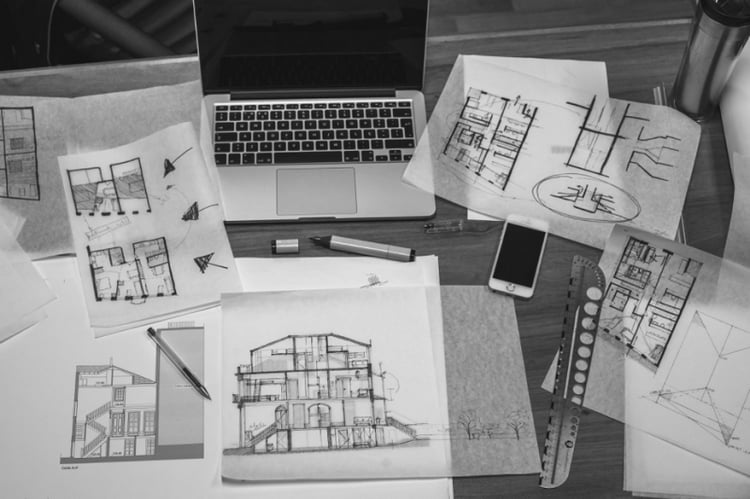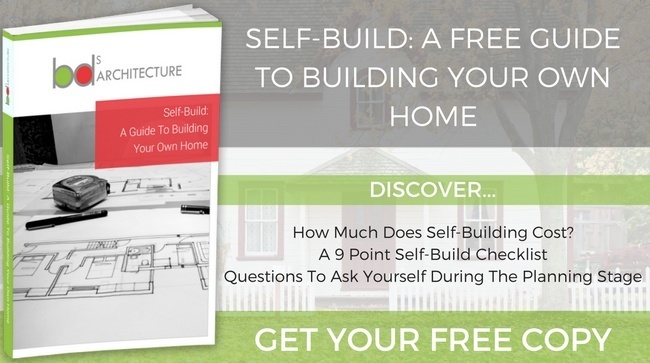
Like thousands of other people around the UK each year, you may have reached the stage where your current home no longer has enough living space for your needs, but are reluctant to move house. In this case a house extension is probably your best option. The good news is that a high-quality house extension will almost certainly cost you less than moving to a bigger home, while also increasing the value of your property when you do come to sell. You must now decide what sort of extension you need for your family. In this article we will briefly introduce the main types of house extension, to give you an idea of the possibilities for your property.
Conservatory
The cheapest and most simple form of extension are conservatories. These glass or plastic constructs range from the simple to the magnificent and are a popular option for people looking for an additional living room, or a bridging space between house and garden. So long as you use high quality double glazing and good insulation, your conservatory should be usable most of the year. What is more, most conservatories fall outside building control regulations and therefore do not need building control approval, they do however quite often need planning permission.
If you have the space and budget you may even wish to extend the conservatory idea and build an extension for a swimming pool. Leisure pools aren't solely for millionaires; a basic heated swimming pool is within the reach of many large property owners. Your swimming pool extension itself may resemble a large conservatory, or it may be more like a brick extension. Speak to us if this is what you had in mind.
Loft Conversion / Extension
If you have a large loft area, you may wish to convert it from empty storage space into one or more additional rooms. We have designed loft conversions that incorporate new guest bedrooms, additional bathrooms, offices and games areas. A loft conversion can be taken on as a stand-alone project or as part of a multi-storey extension. If you want a loft conversion but don’t currently have standing room, it is possible to build a roof extension to create additional height. Of course, this will depend on the type of property you own. A roof extension is not always possible in a semi-detached house.
Single Storey Brick Extension
For owners of semi-detached and terraced properties, single-storey brick extensions are a fast and affordable way of creating extra space at home. Adding a simple extension onto the back of your property, for instance, will free up space to expand your kitchen or transform part of your downstairs area into an open plan living space. You can also extend out to the side (space permitting) to incorporate an office, gym or storage area. If your house is a Victorian or Edwardian building, you may have an un-used ‘side return’ area. These were originally intended as access routes to outdoor toilets and wood sheds, but now make perfect spaces on which to build an affordable side extension.
Two Storey Brick Extension
A two-storey brick extension extends the entire house out to the side or back. These are more complex undertakings and will nearly always require planning permission. They also cost more overall to build than single-storey extensions. However, a multi-storey extension has the potential to massively increase the value of your property, as well as almost doubling your living space. This is an option to seriously consider if you need living space for more than one reason, such as an extra bedroom, bathroom, extended kitchen or home office. Also, a large extension will give you the benefit of economy of scale. It is always cheaper to buy building materials in bulk rather than smaller quantities, so taking on a large build will give you access to bricks, sand, gravel and so on, at lower prices per unit. If you do your research, this could give you a very favourable cost per square metre compared with a small extension.
Structural Glass Extension
Depending on the layout of your building, you may be able to add a structural glass extension. These are an extremely stylish and popular option for homeowners looking to create more open plan communal space, or to relieve pressure on other living rooms by building new access areas. Modern glass extensions usually incorporate brick, wood or structural steel beams in the construction, although structural glass beams are also occasionally used. Weatherproofing and joining options for glass extensions have improved over the last few years, making this type of project more practical and affordable.
New Or Extended Outbuildings
If you don’t want to extend your house itself, you may have a garage or outbuilding that is ripe for extension. A garage can be easily extended to accommodate a workshop or large storage area, or can be converted into a self-contained annex. Of course, if you don’t have outbuildings but do have a large garden there is nothing to stop you building a new one from scratch.
Annexes
An annex is a popular option for households with more than one generation of adults in residence. Traditionally, the annex would be occupied by an elderly parent, which is still sometimes the case. However, you may also want to build an annex to accommodate someone who still lives at home, or as a self-contained space for entertaining guests. An annex can be as simple as a detached bedroom with en-suite bathroom, or it may be a small house in its own right; complete with living room, kitchen and bathroom. Some homeowners choose a completely detached annex, while others opt to have the new building connected to the main house through a covered walkway or secondary extension. All options are achievable, so get in touch to discuss your requirements.
Connecting Two Houses
Owners of terraced properties or semi-detached houses may be presented with the opportunity to buy an adjacent building. This offers a fantastic opportunity to extend a small home and is often cheaper than upgrading to a larger property, not to mention less disruptive. Joining two houses is a specialist project and normally involves reorganising the layout of both buildings. Some homeowners choose to maximise their new space by incorporating other house extension features, such as a loft conversion or single-storey brick extension.
Rearranging Your Home Layout
Extending your living space does not always mean building a new extension. By rearranging your room layout and replacing walls, you may be able to free up valuable space to meet your lifestyle requirements. Creating a more open layout for the downstairs floor is a popular option, but you may wish to do something more specific; such as move your kitchen from the back to the front of the house, or install a new staircase.
The Essential Guide To Extending Your Living Space
As you can see, there are plenty of options available to you when thinking about extending your house, and we have only scratched the surface in this article. Discover more about house extension planning in our free Essential Guide To Extending Your Living Space. This e-book explains your different options and how you can go about creating the ideal extension within your budget. Click here to download your copy.






